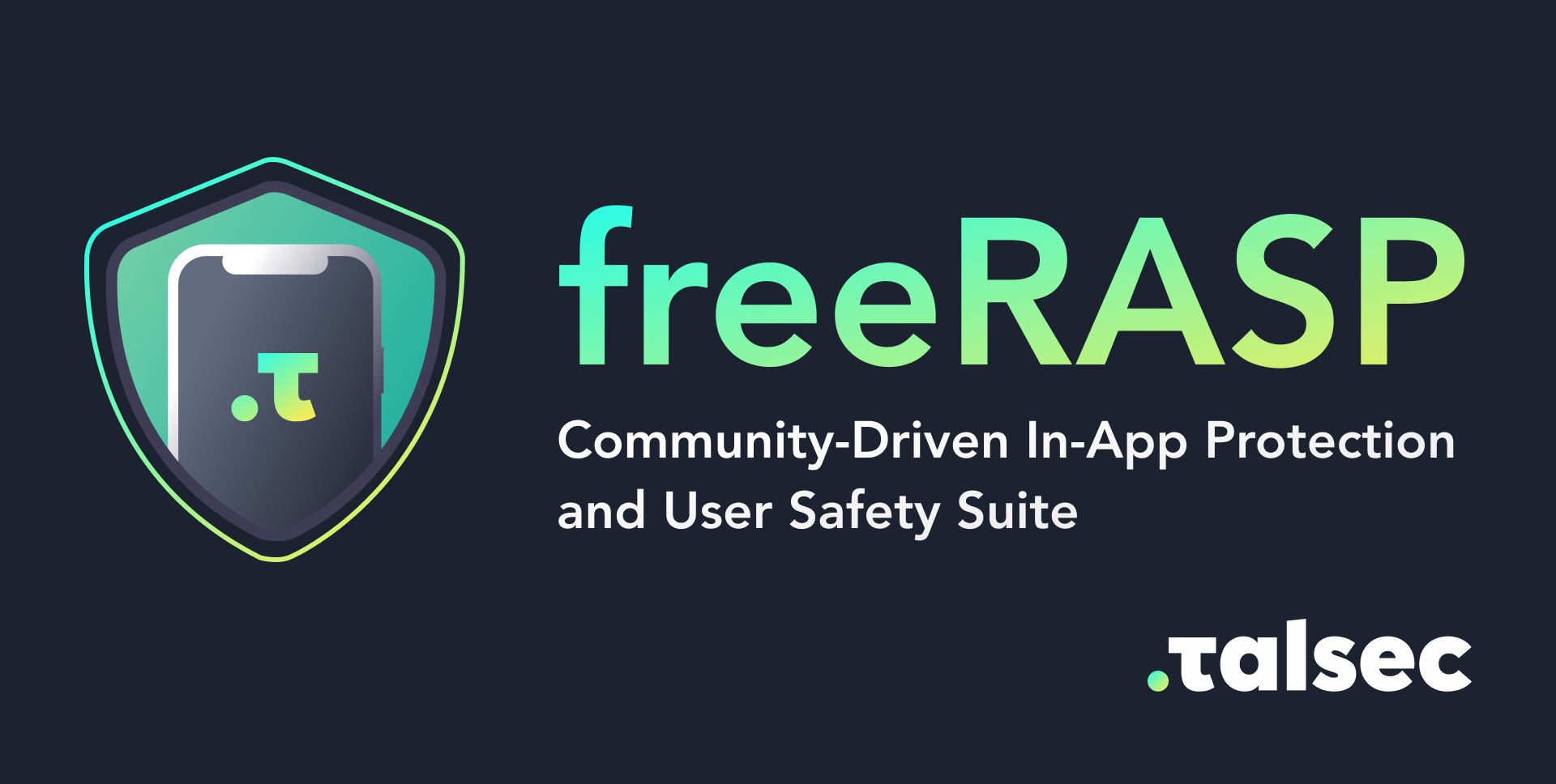freerasp-react-native v3.14.1

freeRASP for React Native
freeRASP for React Native is a mobile in-app protection and security monitoring plugin. It aims to cover the main aspects of RASP (Runtime App Self Protection) and application shielding.
:loudspeaker: The official documentation has been moved to a new location. You can now find it here. :loudspeaker:
Overview
The freeRASP is available for Flutter, Cordova, React Native, Android, and iOS developers. We encourage community contributions, investigations of attack cases, joint data research, and other activities aiming to make better app security and app safety for end-users.
freeRASP plugin is designed to combat
- Reverse engineering attempts
- Re-publishing or tampering with the apps
- Running application in a compromised OS environment
- Malware, fraudsters, and cybercriminal activities
Key features are the detection and prevention of
- Root/Jailbreak (e.g., su, Magisk, unc0ver, check1rain, Dopamine)
- Hooking framework (e.g., Frida, Shadow)
- Untrusted installation method
- App/Device (un)binding
Additional freeRASP features include low latency, easy integration and a weekly Security Report containing detailed information about detected incidents and potential threats, summarizing the state of your app security.
The commercial version provides a top-notch protection level, extra features, support and maintenance. One of the most valued commercial features is AppiCrypt® - App Integrity Cryptogram.
It allows easy to implement API protection and App Integrity verification on the backend to prevent API abuse:
- Bruteforce attacks
- Botnets
- Session-hijacking
- DDoS
It is a unified solution that works across all mobile platforms without dependency on external web services (i.e., without extra latency, an additional point of failure, and maintenance costs).
Learn more about commercial features at https://talsec.app.
Learn more about freemium freeRASP features at GitHub main repository.
:radioactive: freeMalwareDetection
freeMalwareDetection is a powerful feature designed to enhance the security of your Android application by quickly and efficiently scanning for malicious or suspicious applications (e.g. Android malware) based on various blacklists and security policies. It helps to detect apps with suspicious package names, hashes, or potentially dangerous permissions.
After the integration of freeRASP, make sure you visit the freeMalwareDetection repository to learn more about this feature!
:book: Discover the Official freeRASP Documentation
Visit the GitBook page for comprehensive and up-to-date guides, tutorials, and technical documentation specifically for freeRASP. It serves as your go-to resource, offering everything from basic instructions to advanced tips and tricks to help you get the most out of the project.
:loudspeaker: The official documentation has been moved to a new location. You can now find it here. :loudspeaker:
:link: Integration Guide
For integrating freeRASP on the React Native platform, be sure to follow all the steps in the Integration Guide. This guide provides detailed instructions to help you achieve a smooth and efficient integration.
Be sure to bookmark it and stay informed! :books: :sparkles:.
:rocket: What's New and Changelog
Stay informed and make the most of freeRASP by checking out What's New and Changelog! Here, you’ll discover the latest features, enhancements, and bug fixes we’ve implemented to improve your experience across all platforms, including Android, iOS, Flutter, React Native, Capacitor, and Cordova.
Don’t miss out on any updates and explore the changelog to see how we’re continually making freeRASP better for you!
:sparkles: Enhancements
If you have any ideas for improvements, feel free to raise an issue and mark it with an enhancement label. We track these enhancements using GitHub Projects to keep tasks organized and connected to relevant issues or pull requests.
You can check out the project board here.
:page_facing_up: License
This project is provided as freemium software, i.e. there is a fair usage policy that imposes some limitations on the free usage. The SDK software consists of open-source and binary parts, which is the property of Talsec. The open-source part is licensed under the MIT License - see the LICENSE file for details.
10 months ago
10 months ago
1 year ago
1 year ago
1 year ago
1 year ago
1 year ago
1 year ago
1 year ago
1 year ago
1 year ago
2 years ago
2 years ago
2 years ago
2 years ago
2 years ago
2 years ago
2 years ago
2 years ago
2 years ago
2 years ago
2 years ago
2 years ago
2 years ago
3 years ago
3 years ago
3 years ago
3 years ago
3 years ago
3 years ago
3 years ago



